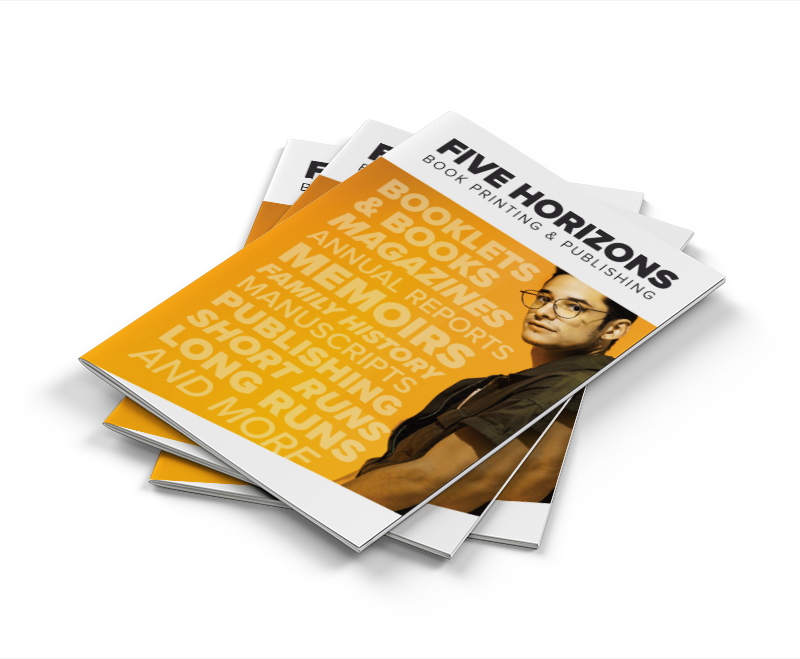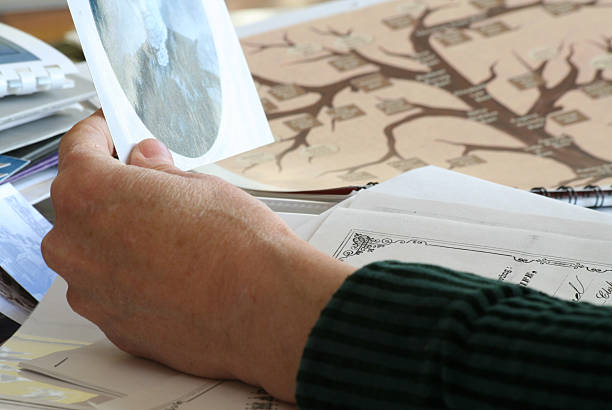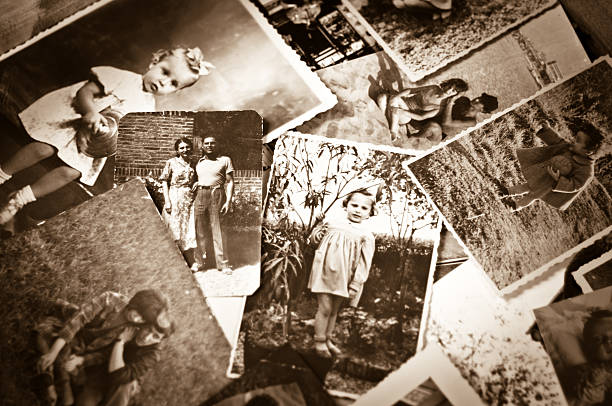






Designing a family tree book is a heartfelt endeavor, allowing you to preserve your family’s legacy and create a cherished heirloom. Whether you’re a beginner or a seasoned designer, these tips will guide you through the process of designing beautiful family tree printing to perfection.
To start, establishing your design philosophy sets the tone for your family’s story. You can gain inspiration by analyzing layouts from past projects and choosing between simplicity and ornate designs. Deciding on material quality, such as glossy or matte finishes, also adds a touch of elegance to your book.
When it comes to selecting and refining photos, remember that each image tells a part of your family’s narrative. Choose high-quality and visually appealing photos that capture the essence of your family members and moments. Refining photos through editing and enhancement ensures they look their best when printed.
The page count of your family tree book is vital in creating a balanced layout and enjoyable reading experience. Strike a balance between content and white space, and consider how page numbers can enhance the overall design.
Tailoring photo sizes and strategically utilizing white space helps create a visually pleasing and cohesive layout. Pay attention to the dimensions of each photo and ensure they complement the design of your family tree book.
Incorporating design elements that reflect your family’s story adds depth and meaning to your book. Create continuity through consistent visual elements, and consider the use of embellishments and graphics to highlight important details.
Text plays a significant role in conveying the generational saga of your family. Captions, narratives, and descriptions complement the visuals, providing context and additional information for readers.
Your family tree charts are, of course, the centrepiece of any Family Tree Book. Utiising a Family Tree Maker program (there are quite a few genealogy software programs that are available), that incorporates your entire family tree is paramount. Family trees can be out together using a genealogy software program suck as Family Tree Maker, or Family Echo. Here the entire tree can be formulated, with a vertical family view – starting with an online tree that includes extended family, in a pedigree view that can be tailored to how many generations you wish to go back with.
Typography choices set the tone for your family tree printing. Consider text styles, placement of captions and narratives, as well as selecting fonts and colors that enhance readability and aesthetics.
The cover of your family tree book is the first impression readers will have. Craft a compelling design that reflects the essence of your family’s history, using cover principles and material selections to make a lasting impression.
While following design principles is essential, don’t be afraid to break the rules and experiment with unconventional layouts. Thinking outside the box can result in captivating and engaging family tree books.
As you conclude your family tree book, reflect on the journey of creating your family legacy, and ancestry account. Celebrate the love, connections, and memories that have shaped your family’s history. For professional printing services, trust Five Horizons Book Printing to preserve these precious memories with their high-quality printing and attention to detail.

When designing your family tree book, it’s crucial to establish a design philosophy that reflects your vision and goals. Your family heirlooms deserve a design that captures the essence of your family’s history and creates a visually stunning representation of your legacy.
One way to kickstart your design journey is by analyzing layouts from past projects. Take a look at family tree books created by others or even your own previous designs. This analysis will provide you with inspiration and guidance for your own unique design. Pay attention to the arrangement of photos, the placement of text, and the overall flow of the layout. By understanding what works well and what doesn’t, you can make informed decisions to create a visually captivating family tree book.
When it comes to design, the timeless debate of simplicity versus ornate designs arises. Consider the overall aesthetic you want to achieve in your family tree book. Do you prefer clean lines, minimalistic elements, and a modern feel? Or are you drawn to intricate details, lavish decorations, and a classic elegance? Both options have their merits, and it ultimately depends on your personal preference and the story you want to tell. Choose a design style that resonates with you and complements the essence of your family’s ancestry..
The choice of material quality can significantly impact the visual appeal and durability of your family tree book. One important decision to make is whether to opt for a glossy or matte finish. Glossy finishes provide a sleek and polished look, enhancing the colors and details of your photographs. On the other hand, matte finishes offer a more subtle and muted appearance, lending a soft and understated charm to your design. Consider the style and mood you want to convey in your book, as well as the overall aesthetic of your family tree.

The photos you choose for your family tree printing play a crucial role in conveying the narrative of your family’s history. Selecting the right photos that capture the essence of each individual and moment is key. Ensure that the photos are of good quality and visually appealing.
Refining photos can involve editing, cropping, and enhancing them to improve their appearance and make them more suitable for printing. By selecting and refining photos with care, you can create impactful narratives that bring your family’s story to life in your family tree book.
The page count of family trees books are a crucial aspect to consider when designing a visually appealing and readable layout. Finding the right balance between content and white space is essential in creating an engaging experience for your readers.
Too much content can overwhelm readers and make the book feel cluttered, while too much white space can give the impression of emptiness. Striking the perfect balance ensures that your family’s story is presented in a visually appealing and easily digestible manner.
To strike the right balance between content and white space, carefully consider the amount of text and images you include on each page. Each page should have enough content to provide meaningful information and contribute to the narrative of your family’s history, but also allow for breathing room with ample white space.
Consider the layout of each page and ensure that it is visually appealing and aesthetically pleasing. Use the whitespace strategically to guide the reader’s eye and highlight the most important aspects of each page.
Page numbers are not only functional but also play a significant role in the overall design and reader experience of your family tree book. Thoughtfully consider the placement, font, and style of page numbers to ensure they enhance the design of each page.
Page numbers can also assist readers in navigating through your family’s story. They provide a sense of structure and organization, allowing readers to easily find specific pages or refer back to certain sections. Ensure that page numbers are clear and legible, even when printed at a smaller size.
By focusing on perfecting the page count of your family tree printing and striking a balance between content and white space, you can create a visually appealing and engaging reading experience for your audience. Pay attention to the design elements, including page numbers, to enhance the overall layout and guide readers through your family’s captivating history.
When creating your family tree book, it’s crucial to consider the sizes of the photos you include. Tailoring the dimensions of each photo is essential for achieving a visually pleasing and cohesive layout. Take into account the overall design and placement of the photos to ensure they fit seamlessly into the narrative of your family’s history.
In addition to photo sizes, white space also plays a significant role in the design of your printed family tree. White space refers to the empty spaces between photos and text, and it is just as important as the images themselves. Utilize white space strategically to create a balanced and aesthetically pleasing layout that enhances the visual impact of your printed family tree.
To make the most of white space, pay attention to the positioning and spacing of photos. Consider how they interact with the surrounding elements, such as captions or descriptions. By carefully arranging the photos and utilizing white space effectively, you can create a visually stunning representation of your family tree.
When creating your family tree book, the incorporation of design elements is vital in conveying your family’s story in a visually engaging and meaningful way. By carefully selecting and utilizing design elements, you can enhance the overall aesthetic and create a cohesive look that resonates with your family’s unique history.
To create a visually cohesive family tree book, it’s important to establish continuity through consistent visual elements. This can be achieved through the use of color schemes, typography, and layout choices that are consistently applied throughout the book. By maintaining a consistent visual language, you can tie together different sections and pages, ensuring a smooth and seamless flow for your readers.
Embellishments and graphics can be powerful tools for enhancing specific moments or highlighting important details in your family’s history. When used thoughtfully, these design elements can add depth, visual interest, and emotional resonance to your family tree printing. Consider incorporating embellishments and graphics in areas where they can contribute to the overall storytelling and bring key moments or individuals to life.
| Design Elements | Usage |
|---|---|
| Color schemes | Consistency in color choices can create visual harmony and evoke specific emotions related to your family’s story. |
| Typography | Fonts and typography style can enhance readability and reflect the era or theme of your family’s history. |
| Layout choices | Strategic layout decisions can guide readers through the narrative and highlight important moments or individuals. |
| Embellishments | Thoughtful use of decorative elements can enhance the visual impact and add personal touches to your family tree book. |
| Graphics | Incorporating visual representations such as illustrations, charts, or maps can provide additional context and storytelling opportunities. |
By incorporating these design elements into your family tree book, you can create a visual masterpiece that not only presents your family’s story but also engages and captivates your readers.
Text plays a vital role in conveying the generational saga of your family tree book. Captions, narratives, and descriptions provide valuable context and additional information about the photos and individuals in your family’s history. By carefully selecting and placing text, you can create a seamless reading experience that enhances the overall storytelling. It’s important to consider the interaction between text and visuals to ensure they complement each other and create a cohesive narrative.
When incorporating text, pay attention to font selection and color choice. Opt for fonts that are easy to read and aesthetically pleasing, as this will enhance the overall design of your family tree printing. Striking the right balance between readability and visual appeal is key. Select colors that work well with the overall theme and color scheme of your book, ensuring that the text stands out without overwhelming the visuals.
When designing your family tree printing, typography plays a crucial role in creating a cohesive and visually appealing design. The selection of text styles, font sizes, and font colors can set the tone and style of your book, ensuring that it reflects the essence of your family’s story. Proper typography choices enhance readability and aesthetics, making your family tree book an engaging and enjoyable reading experience.
The placement of captions and narratives in your family tree book is essential for guiding readers through the visual journey of your family’s history. Proper placement ensures that captions and narratives are visually integrated into the layout, creating a seamless reading experience. Captions should be positioned near the relevant photos or illustrations, providing context and additional information. Narratives should flow naturally within the layout, guiding readers through each chapter or section of your family tree book.
When selecting fonts and colors for your family tree book, it’s important to prioritize readability while also considering the overall aesthetics and theme. Choose fonts that are easy to read and appropriate for the content you’re presenting. Sans-serif fonts are commonly used for body text, while decorative or script fonts can be used sparingly for titles or headings. Additionally, choose colors that enhance readability, such as high contrast between text and background. Consider the emotional impact of colors and how they align with the tone and theme of your family tree book.
The cover of your family tree book serves as the first impression for readers, making it essential to create a design that captivates and reflects the essence of your family history. By following cover design principles and making thoughtful material and texture selections, you can ensure lasting impressions.
When designing your family tree book cover, consider these cover design principles to bring the essence of your family history to life:
The materials and textures you choose for your family tree book cover contribute to its overall appeal and durability. Consider the following factors when making these selections:
By carefully considering cover design principles, material selection, and texture selection, you can craft a compelling cover that captures the essence of your family history and leaves a lasting impression on readers.
| Cover Design Principles | Material and Texture Selections |
|---|---|
| Choose Color Schemes | Material Selection |
| Employ Typography | Texture Selection |
| Incorporate Imagery |
While it’s essential to follow design principles and guidelines, sometimes breaking the rules can lead to unique and creative layouts for your family tree book. Don’t be afraid to think outside the box and experiment with unconventional design choices that align with your family’s story. By pushing boundaries and rebelling against traditional layouts, you can create a visually captivating and engaging family tree book.
As you reach the conclusion of your family tree book, take a moment to reflect on the journey of creating your family legacy. Throughout the process, you have embarked on a meaningful adventure, uncovering the milestones, challenges, and growth that have shaped your family’s history.
Your family tree book is more than just a collection of names and dates; it is a testament to the love, connections, and memories that will be cherished for generations to come. Every page tells a story, capturing the essence of each individual and the collective spirit of your family.
When it comes to preserving these precious memories, Five Horizons Book Printing is your trusted partner. Their commitment to quality and attention to detail ensures that your family tree book is more than just an ordinary collection of pages. With their high-quality printing services, your book will become a stunning and lasting representation of your family’s legacy, ready to be shared and passed down through the ages.
So, celebrate the completion of your family tree book and the journey you have undertaken. By creating this remarkable heirloom, you have not only honored your ancestors but also paved the way for future generations to connect with their roots and continue the story. Your family legacy lives on within the pages, forever preserving the memories and stories that make your family unique.
You can establish a design philosophy by analyzing layouts from past projects and deciding between simplicity and ornate designs. Additionally, consider the material quality, such as glossy or matte finishes, to achieve the desired aesthetic.
To select impactful photos, choose ones that capture the essence of each individual and moment. Refining photos may involve editing, cropping, and enhancing them for optimal printing quality.
The ideal page count strikes a balance between content and white space to ensure visual appeal and readability. Consider how page numbers can enhance the reader’s experience and guide them through your family’s story.
Tailor photo sizes to fit the overall design and consider white space, or the empty spaces between photos and text, to create a balanced layout. Strategic positioning and spacing of photos, along with utilizing white space effectively, can enhance the visual impact of your family tree book.
Incorporating design elements adds depth and visual interest to your family tree printing. Create continuity through consistent visual elements, such as color schemes or typography, and use embellishments and graphics to highlight important details in your family’s history.
Text provides context and additional information about the photos and individuals in your family’s history. Captions, narratives, and descriptions help convey the generational saga of your family tree book.
Typography choices, including text styles, font sizes, and font colors, set the tone and style of your family tree book. Consider the placement of captions and narratives, ensuring readability and integration into the layout.
Craft a compelling cover by reflecting the essence of your family history through color schemes, typography, and imagery. Material and texture selections also contribute to lasting impressions.
Breaking the rules creates unique and creative layouts for your family tree book. Think outside the box and experiment with unconventional design choices that align with your family’s story.
Reflect on the journey of creating your family legacy, celebrating the milestones, challenges, and growth that have shaped your family’s history. Five Horizons Book Printing is your partner in preserving these precious memories with their high-quality printing and attention to detail.
Copyright © 2025 Five Horizons. All Rights Reserved.